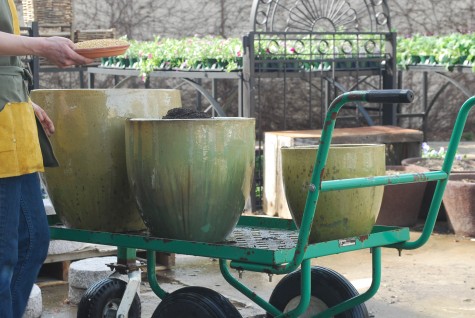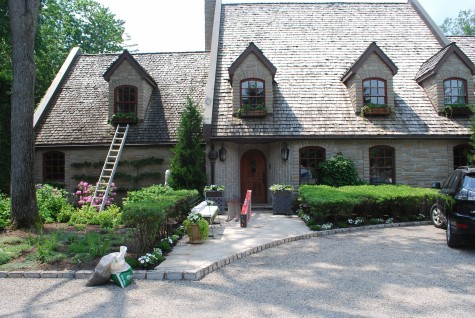 Pots and boxes-this client has plenty. Sixteen window boxes on three sides, of the house, and close to thirty pots. It is the better part of the day start to finish to get then dressed for the summer. The shopping and transport is time that doesn’t show here. This plant comes from that place, and that plant from somewhere else miles from stop number one. There is the loading, the driving and the unloading. But the big story of this entire week’s planting-the heat. I call 90 degrees since May 21st extremely unseasonably hot weather. Making sure the plants survive in spite of their very small rootballs, a time consuming challenge.
Pots and boxes-this client has plenty. Sixteen window boxes on three sides, of the house, and close to thirty pots. It is the better part of the day start to finish to get then dressed for the summer. The shopping and transport is time that doesn’t show here. This plant comes from that place, and that plant from somewhere else miles from stop number one. There is the loading, the driving and the unloading. But the big story of this entire week’s planting-the heat. I call 90 degrees since May 21st extremely unseasonably hot weather. Making sure the plants survive in spite of their very small rootballs, a time consuming challenge.
 This gorgeous pair of Mital terra cotta pots handmade in Impruneta Italy on attending plinths are giant sized. Placed outside a small side terrace, they add a lot of punch to a large drivecourt near the rear of the house. The banana in the center will grow to a substantial size. Fisdh and bananas have this in common-they will grow according to the size of their environment-whether that be water, or soil. If the heat we are having persists, this pot will grow fast.
This gorgeous pair of Mital terra cotta pots handmade in Impruneta Italy on attending plinths are giant sized. Placed outside a small side terrace, they add a lot of punch to a large drivecourt near the rear of the house. The banana in the center will grow to a substantial size. Fisdh and bananas have this in common-they will grow according to the size of their environment-whether that be water, or soil. If the heat we are having persists, this pot will grow fast.
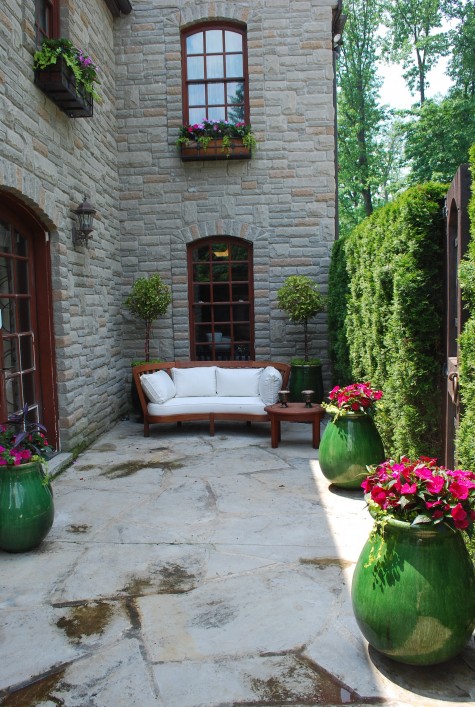 The side terrace is home to a collection of glazed French terra cotta pots. Sonic New Guinea impatiens will thrive in this spot; the light is strong for 6 hours a day. Flanking the couch, a pair of lime irisine grown in tree form. Sporting green and lime leaves atop red voilet stems, they have a distinctly tropical feeling. They will have to be pruned regularly, as they grow like weeds.
The side terrace is home to a collection of glazed French terra cotta pots. Sonic New Guinea impatiens will thrive in this spot; the light is strong for 6 hours a day. Flanking the couch, a pair of lime irisine grown in tree form. Sporting green and lime leaves atop red voilet stems, they have a distinctly tropical feeling. They will have to be pruned regularly, as they grow like weeds.
 This is one of the most beautiful pools I have ever seen; the pergolas are stunning as well. None of this was designed by me-I just plant the pots. My client was the force behind the Italian pots-he likes them. The DeGroot spire arborvitae spend the summer in the pots, and the winters in ground. They are a reasonable approximation in shape to Italian cypress. If I could petition nature to let just one plant run around the hardiness zone rule, it would be the cypress. As sculptural as they are stately, they bring Italy, and Italian gardens to mind.
This is one of the most beautiful pools I have ever seen; the pergolas are stunning as well. None of this was designed by me-I just plant the pots. My client was the force behind the Italian pots-he likes them. The DeGroot spire arborvitae spend the summer in the pots, and the winters in ground. They are a reasonable approximation in shape to Italian cypress. If I could petition nature to let just one plant run around the hardiness zone rule, it would be the cypress. As sculptural as they are stately, they bring Italy, and Italian gardens to mind.
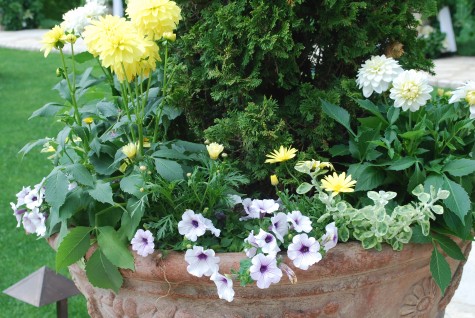 The color scheme this year-yellow, lavender, purple, white-and cool green. The pots have lots of variegated licorice. This green of course is a nod to the starring figures-those 6 Degroot Spires. Most of the color is not so evident yet-the plants have a lot of growing to do. Yellow and Vanilla Butterflies argyranthemum are lively, mixed. Popping up between them, yellow and white dahlias gallerys series dahlias.
The color scheme this year-yellow, lavender, purple, white-and cool green. The pots have lots of variegated licorice. This green of course is a nod to the starring figures-those 6 Degroot Spires. Most of the color is not so evident yet-the plants have a lot of growing to do. Yellow and Vanilla Butterflies argyranthemum are lively, mixed. Popping up between them, yellow and white dahlias gallerys series dahlias.
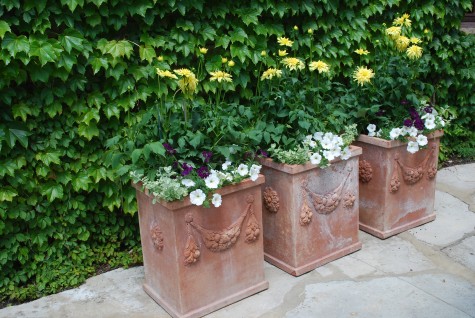 Pool decks tend to be very hot places; white in the composition keeps everything looking cool and fresh. The trailing verbenas have shed their penchant for mildew; the Lanai series is particularly healthy growing. If they are kept deadheaded, they bloom nonstop long into the fall. This very dark purple reads well in the company of white petunias.
Pool decks tend to be very hot places; white in the composition keeps everything looking cool and fresh. The trailing verbenas have shed their penchant for mildew; the Lanai series is particularly healthy growing. If they are kept deadheaded, they bloom nonstop long into the fall. This very dark purple reads well in the company of white petunias.
 This picture in no way reveals that it was cooking hot on that terrace-you will have to take my word for it. The window boxes were especially challenging in that heat. All of the plant material had to be hauled up our extention ladder. This kind of planting is not for the faint of heart.
This picture in no way reveals that it was cooking hot on that terrace-you will have to take my word for it. The window boxes were especially challenging in that heat. All of the plant material had to be hauled up our extention ladder. This kind of planting is not for the faint of heart.
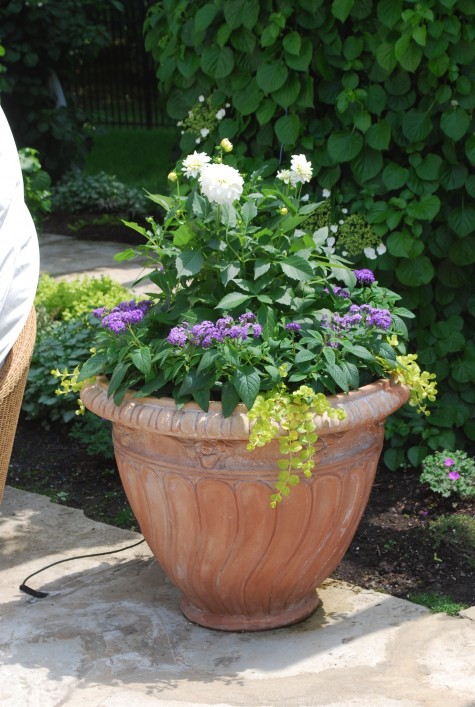 It is finally warm enough to bring the heliotrope out of the greenhouse. This new lavender variety is especially attractive. I am sure you can tell that I like it-I used lots.
It is finally warm enough to bring the heliotrope out of the greenhouse. This new lavender variety is especially attractive. I am sure you can tell that I like it-I used lots.
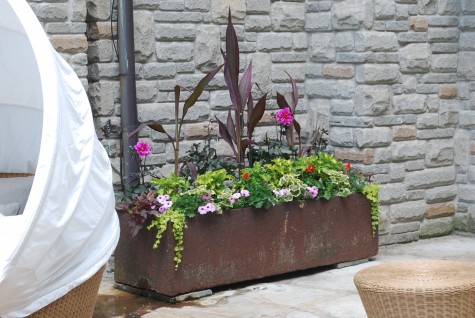 An old iron trough is planted with black leaved orange cannas, and black leaved Fascination dahlias. Wild Lime coleus, Tricolor and Caliente orange geraniums add an unexpected dose of hot color. These big individual cabanas could use it.
An old iron trough is planted with black leaved orange cannas, and black leaved Fascination dahlias. Wild Lime coleus, Tricolor and Caliente orange geraniums add an unexpected dose of hot color. These big individual cabanas could use it.
There is much that is yet to come for this terrace. I can see the pots grown in, and people in the space. Lovely.
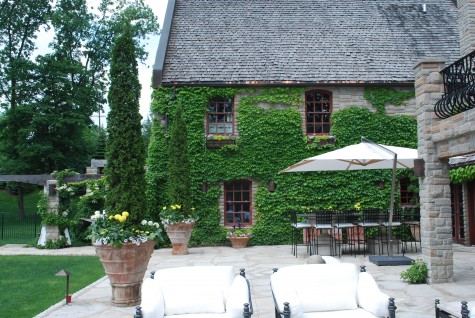


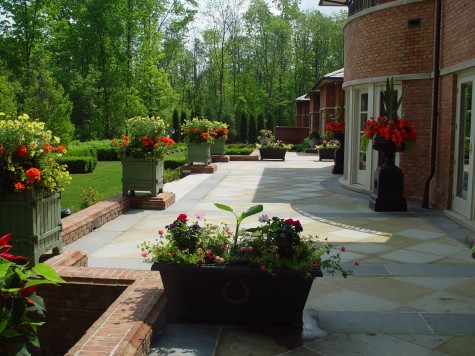
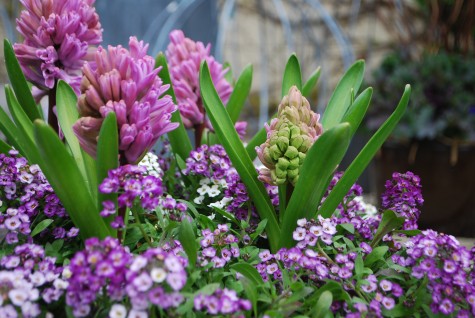

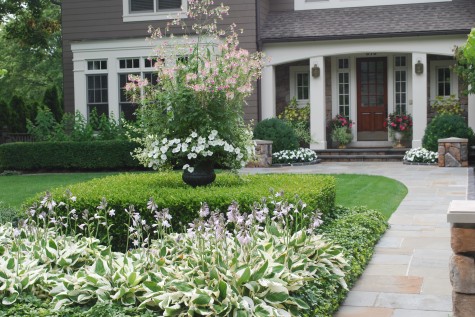
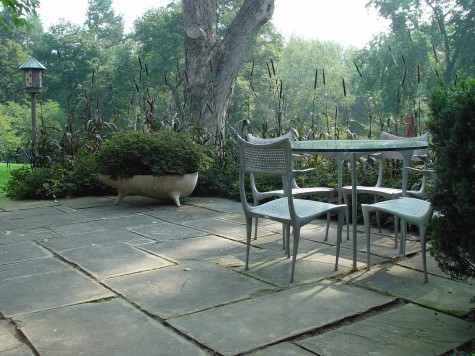




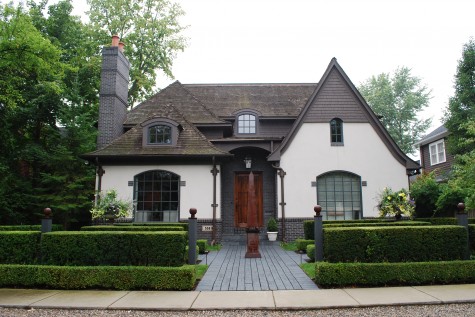
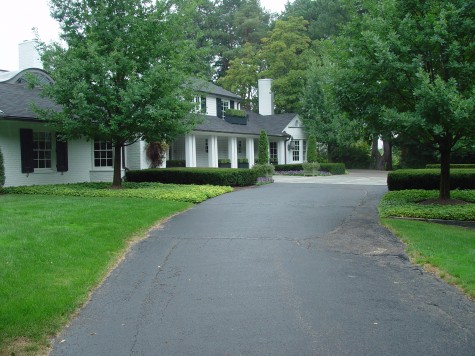


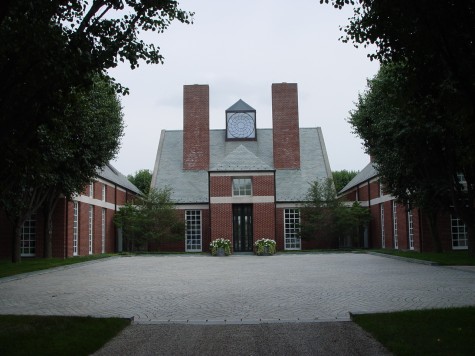
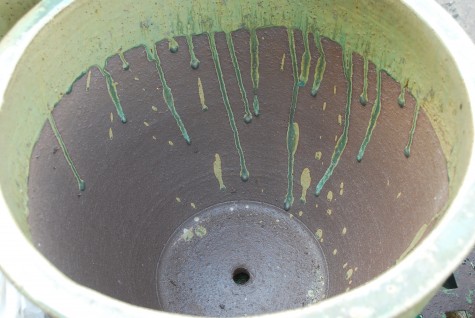
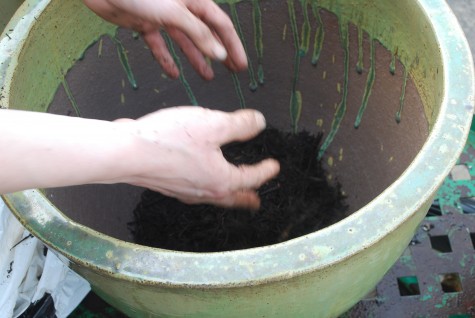
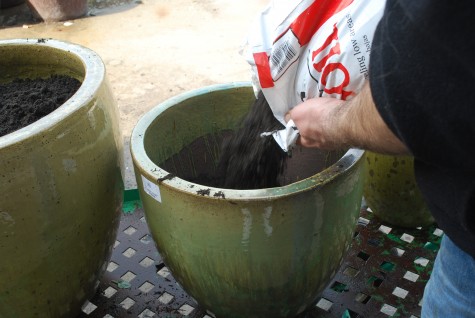 Perhaps even more important-the soil. Every gardener has a mix-I am no exception. I like a heavy soil, leavened with lots of compost and a big dollop of sand. Though plenty of garden centers sell giant bags of peat based “planting media”, I am a fan of topsoil. As in the closest thing to good garden dirt that is available.Peat based plant mixes are light-you can carry a giant bag to your car. But peat based planting media implies a professional grower on the other end who will feed that sterile soil at whatever parts per million it needs to produce good plants. My dirty little secret-good and hefty soil is essential for great plantings. A compost based soil that does not dry out too fast, that has nutrients, is perfect for garden variety gardeners. I am no fan of hauling forty pound bags of soil around-so I farm that job out to whomever I can persuade to help me. This is worth the trouble-making sure the pots get filled with great soil.
Perhaps even more important-the soil. Every gardener has a mix-I am no exception. I like a heavy soil, leavened with lots of compost and a big dollop of sand. Though plenty of garden centers sell giant bags of peat based “planting media”, I am a fan of topsoil. As in the closest thing to good garden dirt that is available.Peat based plant mixes are light-you can carry a giant bag to your car. But peat based planting media implies a professional grower on the other end who will feed that sterile soil at whatever parts per million it needs to produce good plants. My dirty little secret-good and hefty soil is essential for great plantings. A compost based soil that does not dry out too fast, that has nutrients, is perfect for garden variety gardeners. I am no fan of hauling forty pound bags of soil around-so I farm that job out to whomever I can persuade to help me. This is worth the trouble-making sure the pots get filled with great soil.

